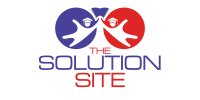Two of America’s largest political and economic concerns are the educational system and the unemployment rate. Unfortunately, as time progresses they become more paradoxical. Three-quarters of the rapidly growing fields of occupations: science, engineering, technology, and mathematics, require students to have an education beyond high school. Unfortunately, the United States is also close to the top of the list regarding school dropout rates across the world. For those who do graduate and attend college, over half need remedial classes, and never manage to achieve graduation.
A college degree is a primary way to boost the U.S. economic growth and increase what we have been lacking more recently – a thriving and strong middle class. For that to happen, the education system has to improve immensely, and that means throughout preschool and into college, or careers, or the innovation-based economy that future generations will employ to make their livings.
For that challenge, in 2009, the Obama Administration launched a set of core reforms that he hoped would ensure that more students would take advantage of the free K-12 education they are receiving and encourage a better take-up of the college track post high school.
Core Reforms – Obama 2009
![]() Highly Regarded Preschools: $1 billion was invested to promote preschool attendance for all American children; over half the states markedly boosted their own investments in early learning. Through the Obama Administration’s Race to the Top – Early Learning Challenge Program, 5.2 million children from low-income families in 20 states will benefit from high-quality, seamless state-funded early learning systems that link education, health, nutrition, and family supports. Additionally, 18 states are building or enhancing their infrastructure to provide or expand high-quality preschool programs in high-need communities through Preschool Development Grants.
Highly Regarded Preschools: $1 billion was invested to promote preschool attendance for all American children; over half the states markedly boosted their own investments in early learning. Through the Obama Administration’s Race to the Top – Early Learning Challenge Program, 5.2 million children from low-income families in 20 states will benefit from high-quality, seamless state-funded early learning systems that link education, health, nutrition, and family supports. Additionally, 18 states are building or enhancing their infrastructure to provide or expand high-quality preschool programs in high-need communities through Preschool Development Grants.
![]() Higher Standards: More than 24 million students have access to higher standards of education than they did a few years ago
Higher Standards: More than 24 million students have access to higher standards of education than they did a few years ago
![]() Data and Assessments with more application: The reform invested $360 million in states that created a newer measurement aligned to career-ready and college- standards that exceed the outdated bubble tests, concentrating with a focus on problem-solving, critical thinking, and writing.
Data and Assessments with more application: The reform invested $360 million in states that created a newer measurement aligned to career-ready and college- standards that exceed the outdated bubble tests, concentrating with a focus on problem-solving, critical thinking, and writing.
![]() All classrooms having effective and dedicated educators: All students require and are worthy of strong and passionate teachers; however, research reveals that those of low-income and minority students are considered to have less innovative and dedicated teachers than other students.
All classrooms having effective and dedicated educators: All students require and are worthy of strong and passionate teachers; however, research reveals that those of low-income and minority students are considered to have less innovative and dedicated teachers than other students.
![]() Discipline and Civil rights: In 2014, the U.S. Departments of Education and Justice issued the package of guidance and resource materials the purpose of which was to aid schools’ focused attention on the excess of exclusionary punishment and unbalanced levels of correction for students with disabilities and students of color.
Discipline and Civil rights: In 2014, the U.S. Departments of Education and Justice issued the package of guidance and resource materials the purpose of which was to aid schools’ focused attention on the excess of exclusionary punishment and unbalanced levels of correction for students with disabilities and students of color.
(U.S. Department of Education, 2015)
Present Reforms And Of The Future

Barack Obama
These reforms introduced during the Obama Administration (2008-2016) set the standard for the creation of the following reforms and their futures, recommended or discussed in either the Obama or the current president’s Administration.
- Creating the STEM Program: This reform investigates methods of calculating classroom subject material and procedures in the Common Core State Standards for Mathematics and the Next Generation Science Standards to enhance and increase knowledge in the areas of technology, science, engineering, and math education.
- School Choice – Giving Parents the Knowledge They Need: Parents need information about the educational lessons, amenities, and the school climate to make informed decisions about schools. An advanced method of measuring and accumulating information on performance and an approach to making the method available to families is needed in the schools.
- The Improvement of Leadership in Schools: The Every Student Succeeds Act provides states and districts with fresh opportunities to provide for school leadership. Based on evidence, mediations, interventions, and more involvement from school policymakers it has been proven that the quality of school leadership can be vastly improved.
(RAND, 2017)

Students benefit from STEM program
These are a sampling of the latest initiatives added to the United States educational reforms.
However, the need for higher educated people has never been greater, especially in the areas that STEM covers. Parents, students, school leaders and the general populace can expect to see more reforms, more transitions, and constant changes until the United States is where it needs to be with regard to meeting the educational needs of its citizens.
The U.S. educational system has continued to slip and fall behind over the past five decades due to changing demographics and socioeconomics.






